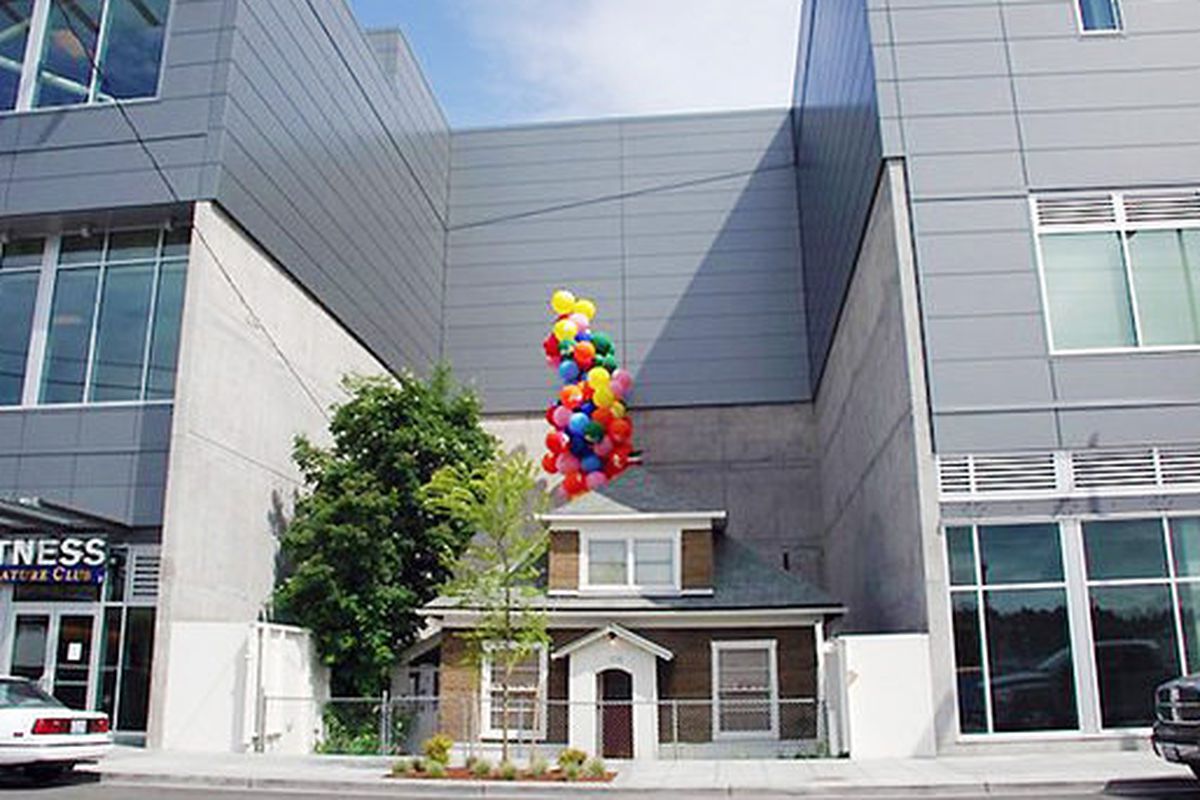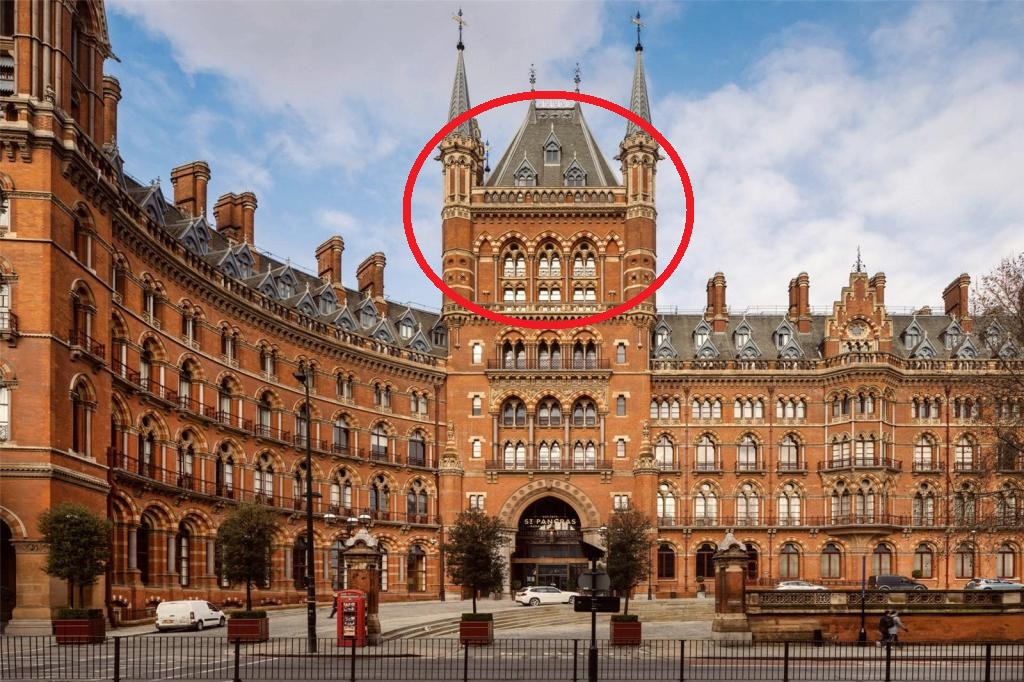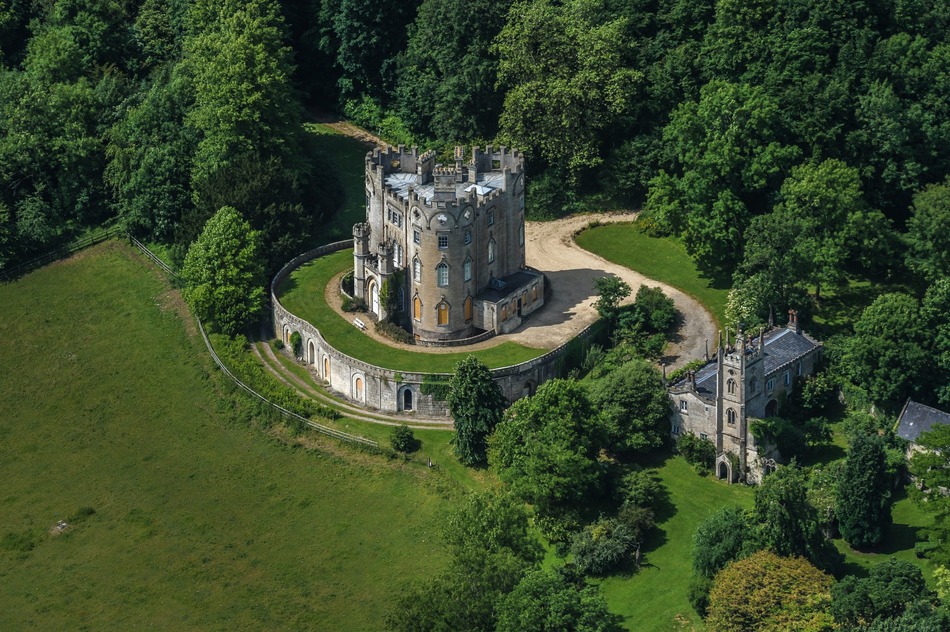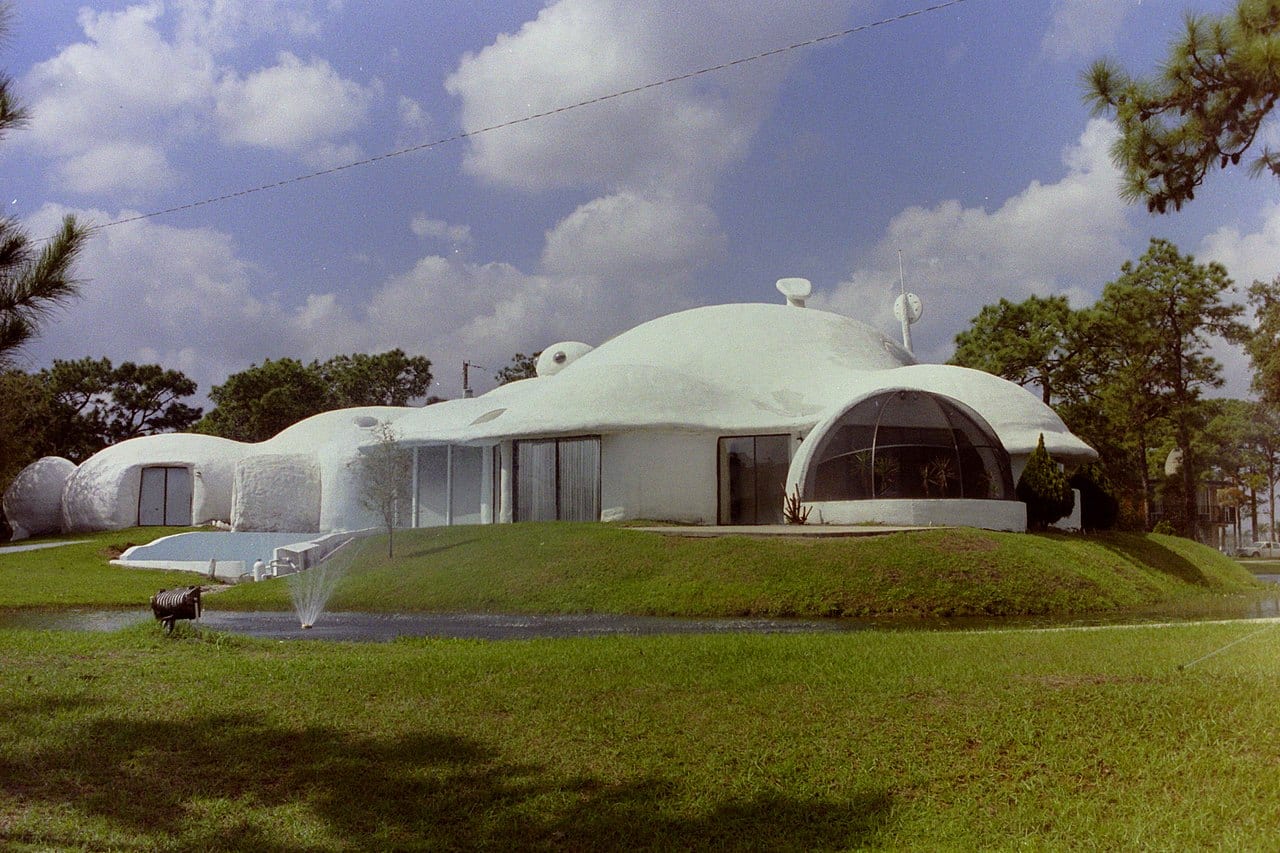The Sowden House, also commonly known as the ‘John Sowden House,’ the ‘Black Dahlia House,’ as well as a few other names, is an incredible property located in the Los Feliz neighbourhood in Los Angeles, California.
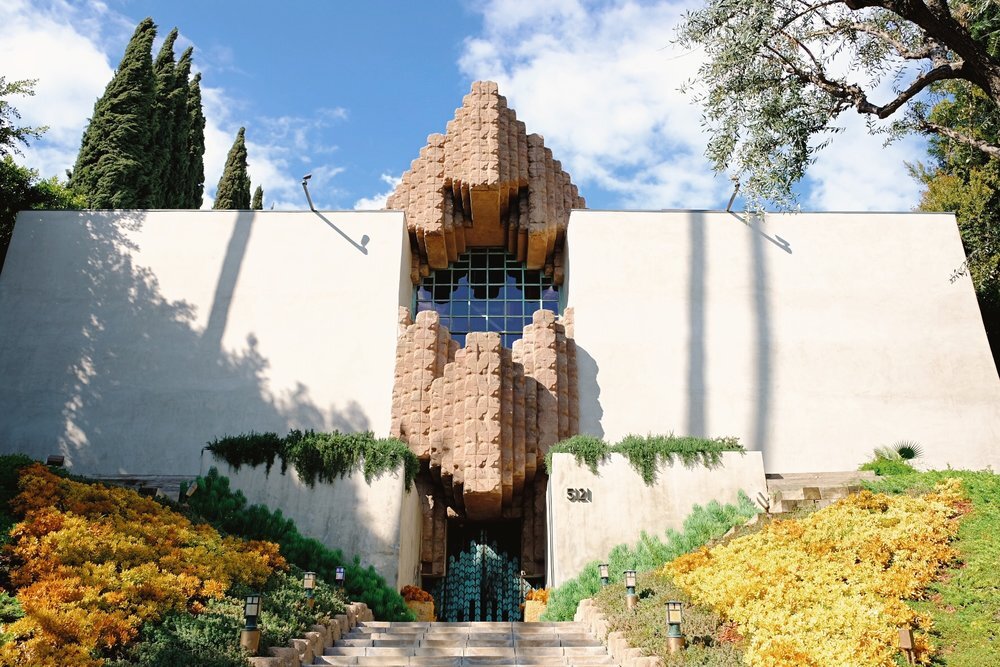
THE HISTORY OF THE JOHN SOWDEN HOUSE
In 1926, the painter and photographer John Sowden hired his friend, the renowned architect Lloyd Wright, to design and build a 6,000-square-foot neo-Mayan property at 5121 Franklin Avenue in Los Feliz.
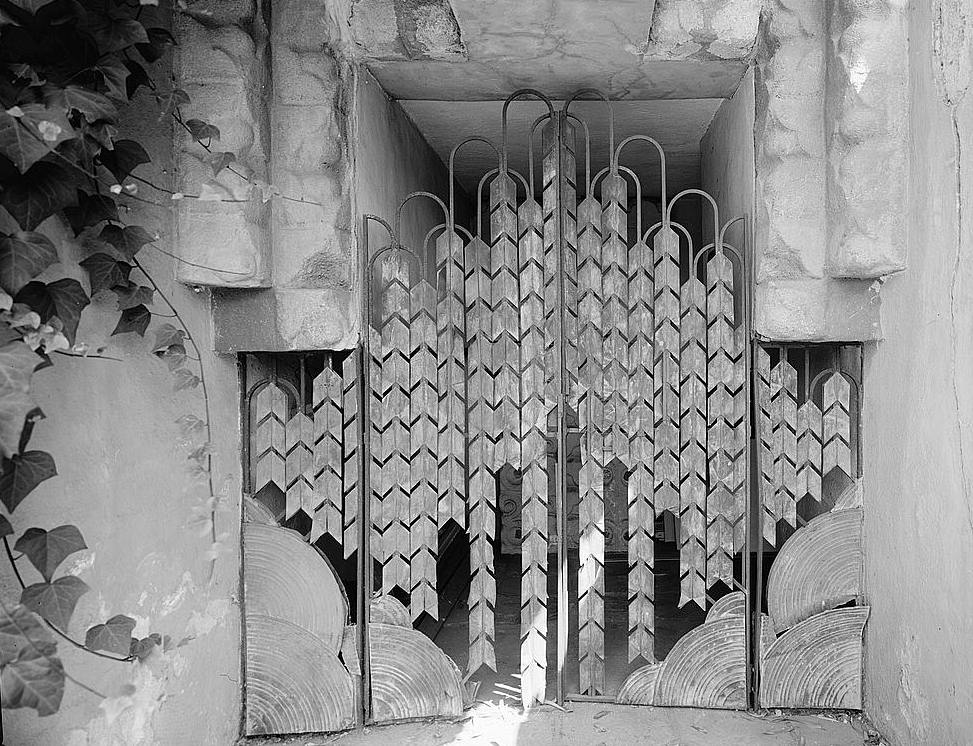
The house built by Lloyd Wright was rectangular in shape, with four connected wings looking in on an enclosed courtyard. The property was built using concrete textile blocks, which helped create the Mayan-style look.
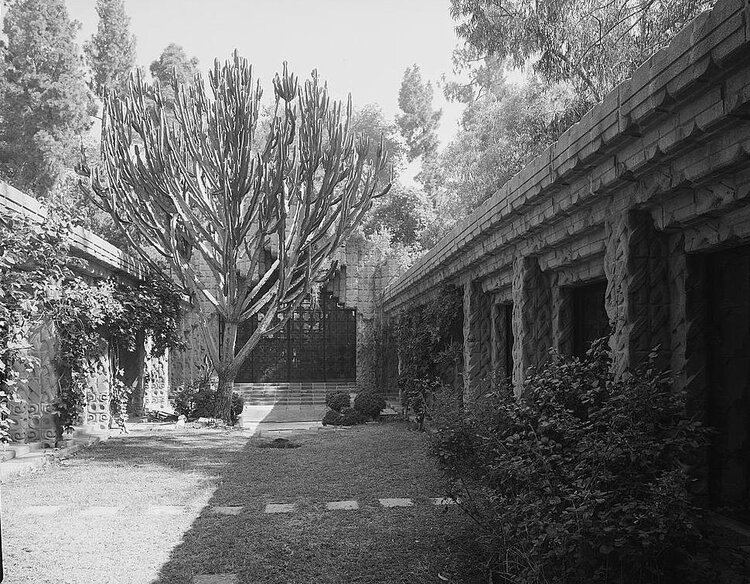
The John Sowden House courtyard as it looked in 1971.
Another Mayan-style property known as the ‘Ennis House’ is located nearby, just to the northeast of Loz Feliz. This property was built by Lloyd Wright’s father, the world-renowned architect Frank Lloyd Wright in the early 1920s.
In fact, Frank Lloyd Wright designed a number of houses over the years which featured this Mayan theme, from which Lloyd Wright most likely drew inspiration.
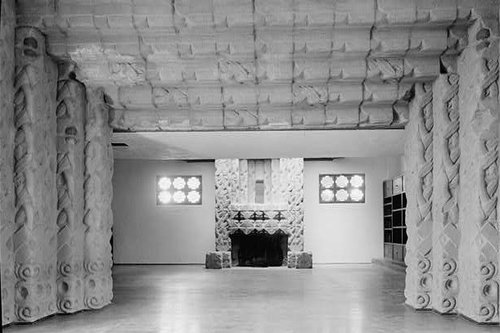
Reception of these new Mayan-style houses at the time was generally negative. Critics derided the use of the concrete blocks, the cheapest available material, being used in expensive upscale neighbourhoods.
However, over the years, opinions changed, and the houses built by the Wrights using textile blocks are now much-loved famous landmarks that have been added to the US National Register of Historic Places.
THE EARLY YEARS IN THE SOWDEN HOUSE
Despite having the house built and designed for him in 1926, John Sowden only lived in the property for a few years before selling it to Ruth Rand Barnett in 1930. The house would sell again in 1936, 1944, and 1945.
THE BLACK DAHLIA YEARS
Between 1945 and 1950, the property was owned by a Los Angeles physician, Dr. George Hodel. Although he was not named at the time, he was a prime suspect in the infamous Black Dahlia murder, which took place in 1947.
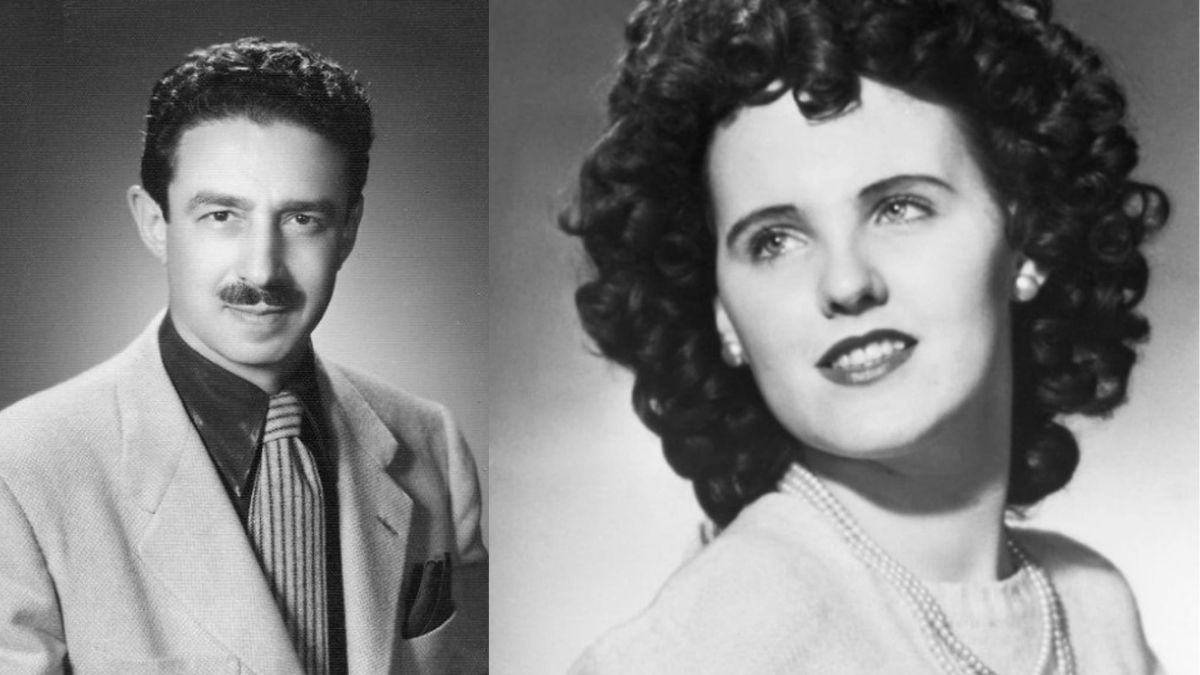
The doctor’s very own son, Steve Hodel, who was a retired LA homicide detective, argued in his own 2003 book ‘Black Dahlia Avenger,’ that the Black Dahlia victim Elizabeth Short was tortured, murdered, and dissected by his father in the basement of the Sowden House.
Dr. George Hodel came to the attention of the police for a number of reasons; firstly, because of accusations from his very own daughter, Tamar, who accused him of all sorts of heinous things.
Secondly, Elizabeth Short was dissected, and it’s believed whoever committed the crime had some medical knowledge, which Dr. George Hodel obviously had. Thirdly, at least eight witnesses claimed Dr. George Hodel and Elizabeth Short had been in a relationship in 1946.

The details of this police investigation didn’t come to light until 2003, when a file was discovered in archives at the Los Angeles District Attorney’s office. The file revealed that in 1950 Dr. George Hodel was a prime suspect in the Black Dahlia case, his property had been bugged, and DA tapes recorded him saying:
“Supposin’ I did kill the Black Dahlia. They can’t prove it now. They can’t talk to my secretary anymore because she’s dead. They thought there was something fishy. Anyway, now they may have figured it out. Killed her. Maybe I did kill my secretary.”
In 1950 Hodel sold Sowden House and left Los Angeles for Hawaii before moving to the Philippines. While living overseas, he started another family, having four children with a Filipino woman named Hortensia Laguda. Hodel passed away in 1990 at 91 years of age; he was never charged with the murder of the Black Dahlia.
Despite never being charged with the murder of Elizabeth Short, his son, Steve Hodel, has always maintained that his father killed her. The retired homicide detective believes multiple women were killed in the house and potentially buried there. Despite these claims, the Sowden House has never been excavated to look for any remains.
Now a serial killer living at the Sowden House may seem a little far-fetched; however, in 2018, it was revealed that George Hodel wasn’t only a suspect in the Black Dahlia case, he was also the suspect in what was known as the Green Twig Murder.
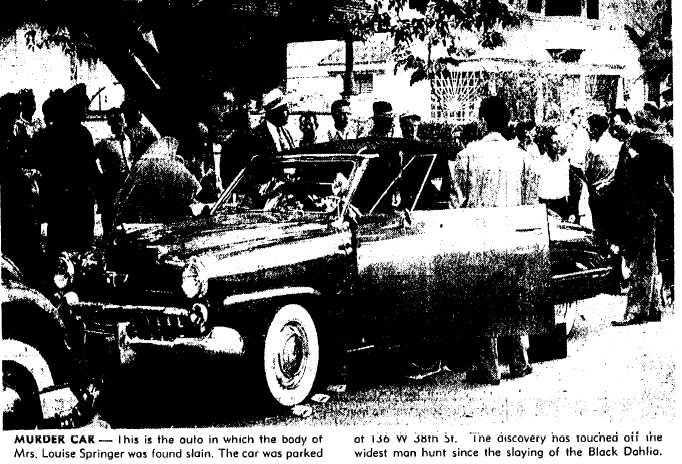
The Green Twig Murder occurred in 1949, two years after the Black Dahlia. A thirty-five-year-old woman named Louise Springer was found murdered in her car in LA. Police interviewed Dr. Hodel over the murder at that time but was never charged.
Two unsolved murders, both of which Dr. George Hodel was a suspect in before he left LA and settled in the Philippines. Was it just a coincidence that he left when the heat was being turned up by the DA in 1950? Was it just a coincidence that his own son believed he was a serial killer long before evidence was released that showed he was a suspect in multiple killings during the 1940s?
Unfortunately, we will probably never know…
LATER YEARS IN THE SOWDEN HOUSE
Despite the dark years associated with Sowden House in the 1940s, in more recent times, the property has had a fair amount of good publicity.
In 1997 the property was featured in Curtis Hanson’s hit movie ‘LA Confidential,’ featuring Kevin Spacey, Russell Crowe, and Kim Basinger.
Then in 2001, the property sold for $1.2 million to award-winning designer Xorin Balbes. Balbes, who claimed the house was a “wreck” when he purchased it, spent $1.6 million on renovations. This included a new kitchen, covering the interior walls in metallic bronze and silver, and a swimming pool in the courtyard.
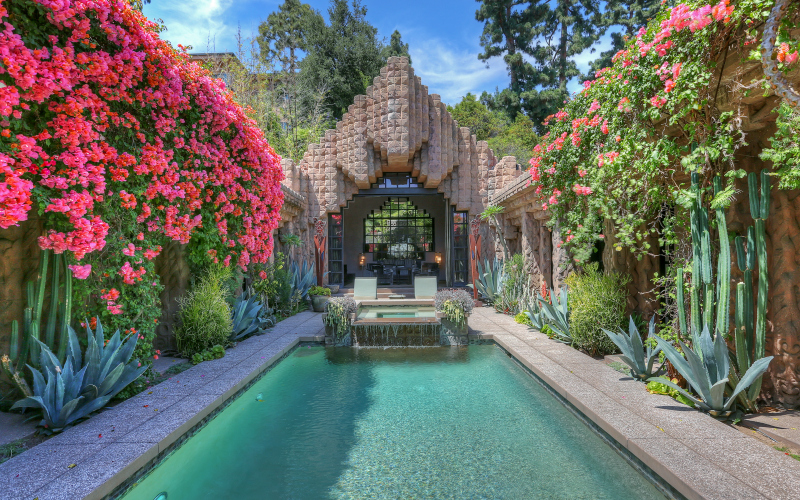
Lloyd Wright’s son Eric, also an architect, gave his verdict on the changes to the Sowden House. “It’s a mixed bag,” he said, “but most of the work he did is very good.”
In 2004 the property would once again appear on the big screen, this time in Martin Scorsese’s movie ‘The Aviator.’ Over the next few years, the house would also appear in numerous Tv shows, such as America’s Next Top Model and Ghost Hunters.
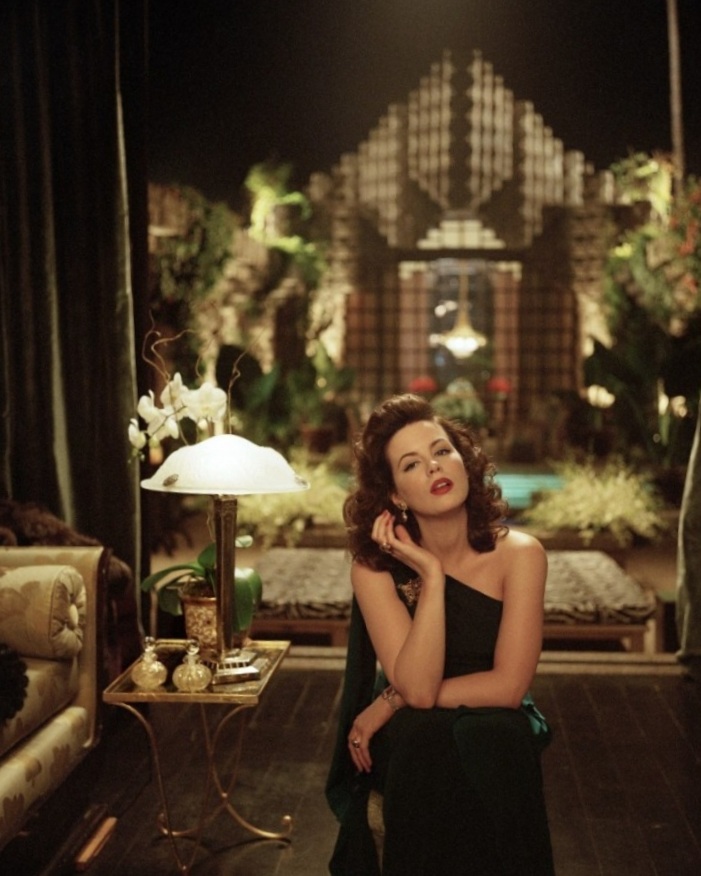
Kate Beckinsale at the Snowdon House in the movie ‘The Aviator’.
In 2011, Balbes sold the Sowden House for $3.85 million to a man named Stephen Finklestein. Finklestein would own the house until 2018 before finally selling it for $4.69 million to Dan Goldfarb.
Goldfarb founded Canna-Pet, a company that creates CBD products for pets. He and his wife, Jenny, used Sowden House as a place for fundraisers, parties, and weddings.
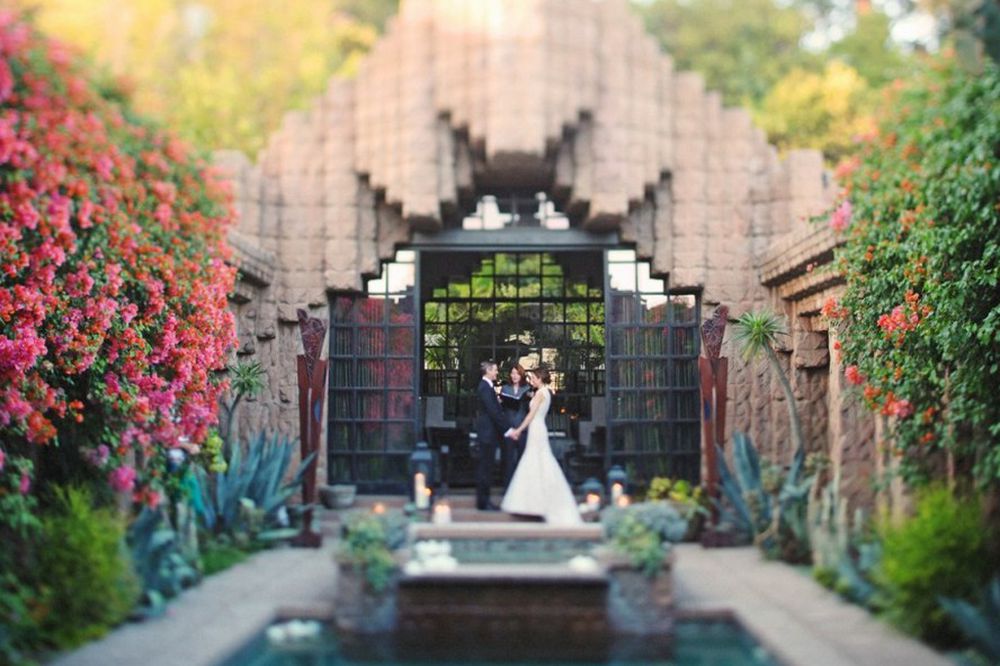
THE JOHN SOWDEN HOUSE TODAY
Thankfully, thanks to Dan Goldfarb using the property for events such as fund-raisers and weddings, many great photos of the Sowden House as it looked very recently exist.


Below is the living room featuring a large block fireplace, exactly as it looked when the property was first built (scroll back to the top of this post, and you’ll see the exact same fireplace).
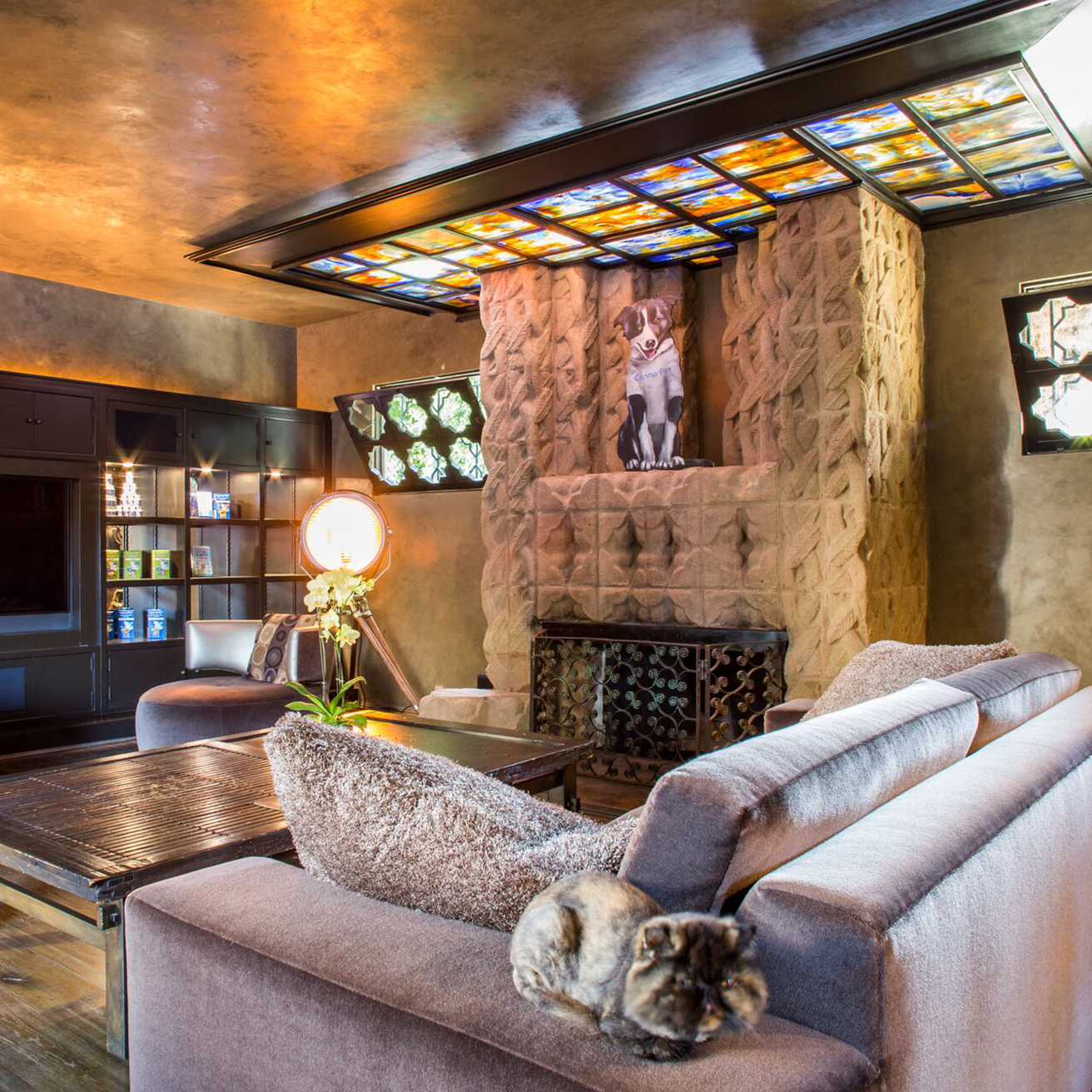


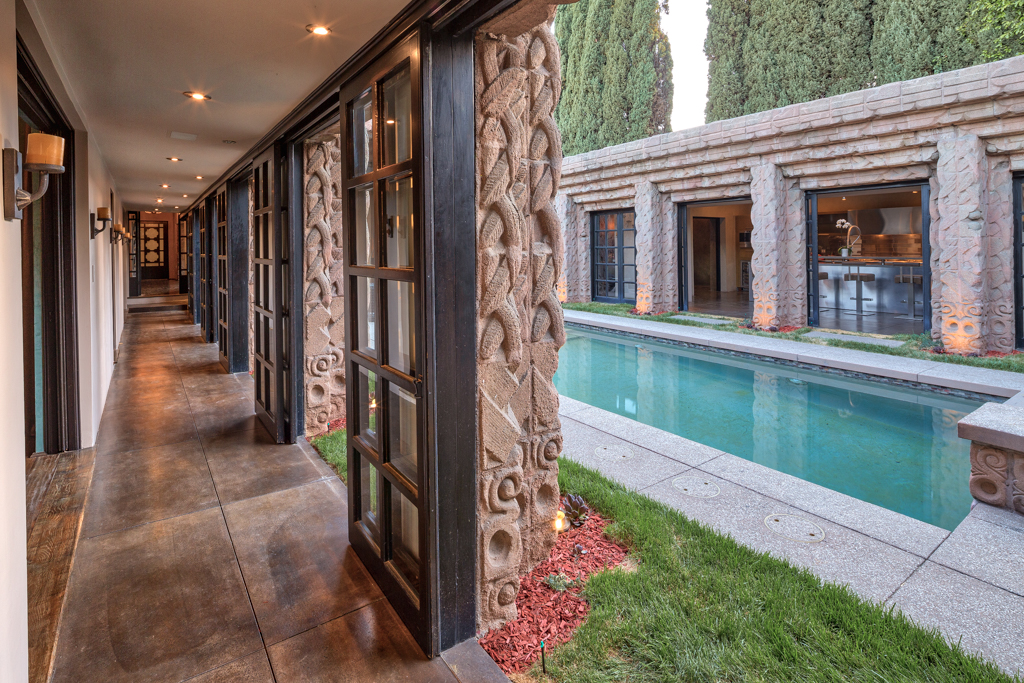
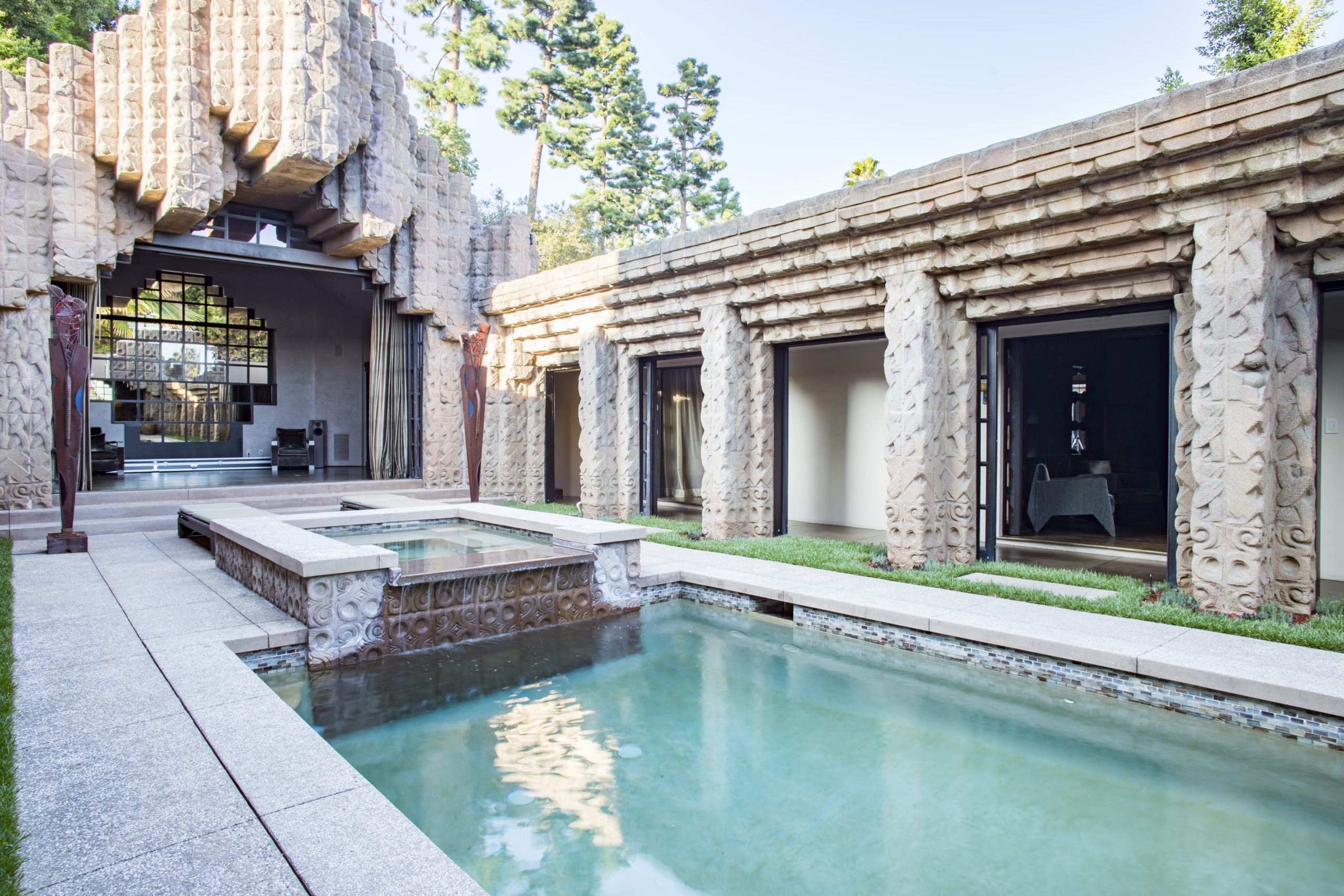
In 2022, the John Sowden House changed hands once again, this time for a whopping $6.16 million. The buyer was Nate Daneshgar, whose family owns Grand Central Market in downtown LA.
What Nate has planned for the Sowden House in the future, we don’t know…

